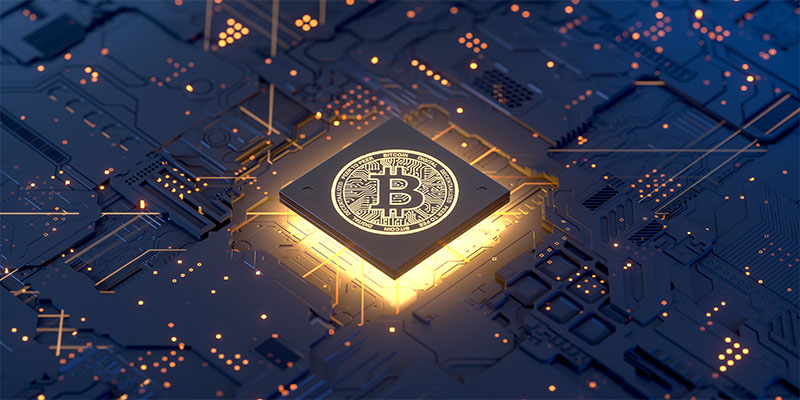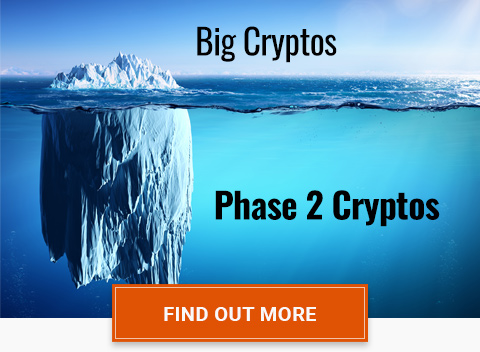Questions keep pouring in about the small Phase 2 Cryptos following in bitcoin (BTC) and Ethereum’s (ETH) footsteps. So today, I’m sharing a new talk with RiskHedge Chief Crypto Analyst Stephen McBride.
In it, we discuss what to expect when the government regulates crypto… and we cleared up a common misconception about crypto. Stephen once and for all answers the question: is bitcoin really anonymous?
As a reminder, our wildly popular Phase 2 Crypto Summit comes offline soon. Go here to see it while you can.
***
Chris Reilly: Stephen, your crypto essay last week got a ton of responses. Readers want to know more about your prediction that regulations will open the floodgates for millions of new investors to get into crypto. And ultimately push crypto prices much, much higher.
In the financial news, you mostly hear the opposite. They speculate that regulation will cripple crypto…
Stephen McBride: I know, but the facts don’t support their view.
Two Wharton University professors studied this recently. They looked at crypto regulations other countries have put in place. While the US has barely regulated crypto, many foreign countries have. The professors looked at how crypto prices reacted when other countries introduced regulations.
The study concluded that regulation almost always did not have a negative impact on crypto prices.
Of course, no other government is as influential as the US. US regulations will be the most consequential and set the tone for crypto.
But this study is the best real-world data showing how regulation impacts crypto prices. And it confirms that investors aren’t alarmed by regulation. If anything, they’re comforted by it.
Chris Reilly: How so?
Stephen: At some point, every industry was new and unregulated. Many similarities exist between crypto today and unregulated markets in the past.
For example, modern stock market regulations were first introduced in 1934 with the creation of the SEC. That didn’t crush the stock market. Instead, it helped turn investing in the stock market into a common thing that any family can do.
That’s turned out pretty well. The stock market has appreciated at least 45,000% since 1934, depending on how you calculate it.
Chris: Will a new regulatory agency be created to oversee crypto? An SEC for crypto?
Stephen: I think so. And from talking with my contacts, it’s clear US regulators aren’t interested in ruining crypto. They want to embrace it. They want the US to be the #1 crypto nation.
Billionaire Mark Cuban agrees. Look at what he recently tweeted. To paraphrase, Cuban believes that regulation, done the right way, will boost confidence in crypto without slowing down its innovation. I think he’s right.
 Source: Twitter
Source: Twitter
Chris: In your essay last week, you drew a parallel to Obamacare. You showed how health insurance stocks skyrocketed once Obamacare passed… because it resolved the uncertainty hanging over the insurance industry.
Are there other examples of that happening?
Stephen: Have you heard of the 26 words that created the internet?
In the early 1990s, the internet was the wild west. It was a transformational new technology that regulators hadn’t figured how to deal with yet—much like crypto today.
President Clinton signed the Communications Decency Act into law in 1996. In this bill was a short 26-word law called Section 230.
In a nutshell, this law established a framework for who can be held responsible for online content. It resolved a lot of the uncertainty around publishing and doing business on the internet.
This law paved the way for America’s internet companies to boom. The Wall Street Journal says because of Section 230:
America was able to cultivate online companies in ways that other countries could not.
The rest is history. America produced Apple, Microsoft, Google, Netflix, Facebook… and dozens of other internet stocks that would skyrocket 5,000%+.
Crypto is in a similar spot today. Although it’s flourishing, it’s still small and immature.
For all the talk about regulators coming down hard on crypto… I expect America to embrace and be first in crypto, just like it was with the web.
|
Chris: What about the issue of anonymity? The government hates anything that can’t be tracked. And bitcoin is widely considered to be anonymous…
Stephen: This is a common misconception. While bitcoin itself is anonymous, the system around it is set up in a way that makes it virtually impossible to maintain anonymity.
Blockchain, the technology that underpins all cryptos, gives you complete anonymity.
You can send and receive bitcoin without revealing any personal details. Senders and recipients are denoted by wallet addresses. These addresses are anonymous and cannot be traced to individual identities.
At the same time… every bitcoin transaction since the network launched in 2009 is recorded in a permanent, public ledger. Anybody can look at any transaction.
Chris: So everybody can see all transactions. But they don’t know who’s transacting.
Stephen: Right. However, the possibility of anonymity vanishes when you see how the “on-ramps” of crypto work...
In short, an on-ramp is how you get your money—US dollars if you’re an American—into crypto in the first place. The only legitimate way to do that is to open an account at a big crypto exchange like Coinbase, Gemini, or Kraken.
These companies have strict procedures in place to verify who you are. You have to provide a picture ID, a physical address, and a bank account. If you don’t, you can’t use their platforms. Which effectively means you can’t invest in crypto.
Chris: I see. So blockchain is truly anonymous. But the exchanges act like a doorman who verifies your ID before you enter the club.
Stephen: Correct. In the earliest days of crypto, before the on-ramp framework existed, true anonymity was possible. Folks who got their money into bitcoin early didn’t have to follow the identity verification procedures that exist now.
But that doesn’t mean they’re forever untraceable.
Let’s say you anonymously bought a significant sum of bitcoin a few years ago. You transferred it to a crypto wallet and have been sitting on it ever since. Congratulations, you have a big profit… and you want to cash out.
To sell it for US dollars, you have to get it on an exchange like Coinbase or Gemini. Now you’re back to the original problem. You can’t do that unless you verify your real-world identity.
Of course… there are other ways to get your money out of crypto. But they’re legally questionable at best. So I won’t mention them here.
Chris: So to summarize, bitcoin can be anonymous on the blockchain. But it’s near impossible to get your money in or out without verifying your identity… which means you’re no longer anonymous.
Stephen: Right. And, keep in mind, this is all part of the plan. You may not like these identity verification procedures… but they’re a necessary compromise the crypto world has to make with governments.
Chris: Thanks, Stephen.
As a quick reminder: the Phase 2 Crypto Summit is still available for viewing, but we have to take it down this week.
Go here to discover how to easily take advantage of today’s massive opportunity in Phase 2 cryptos.
The key, as Stephen discussed early on in the Summit, is to buy tiny cryptos before they’re available on major exchanges. By doing so, you can potentially collect an average return of 91% in five days.
At the Summit, Stephen also named one of his top cryptos with 10X upside. Go here to watch while the Phase 2 Crypto Summit is still available.
Or click here to read the transcript of the event.
Chris Reilly
Executive Editor, RiskHedge





